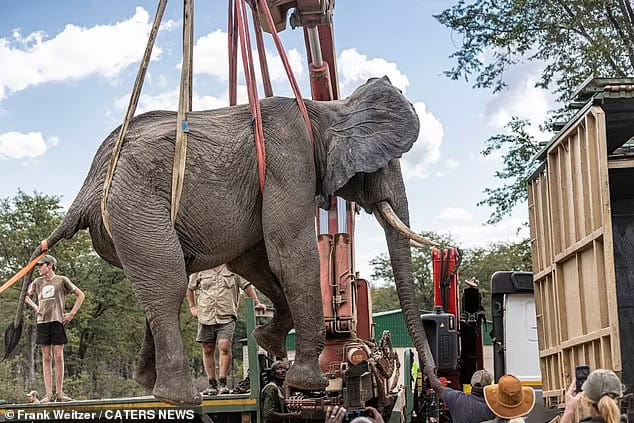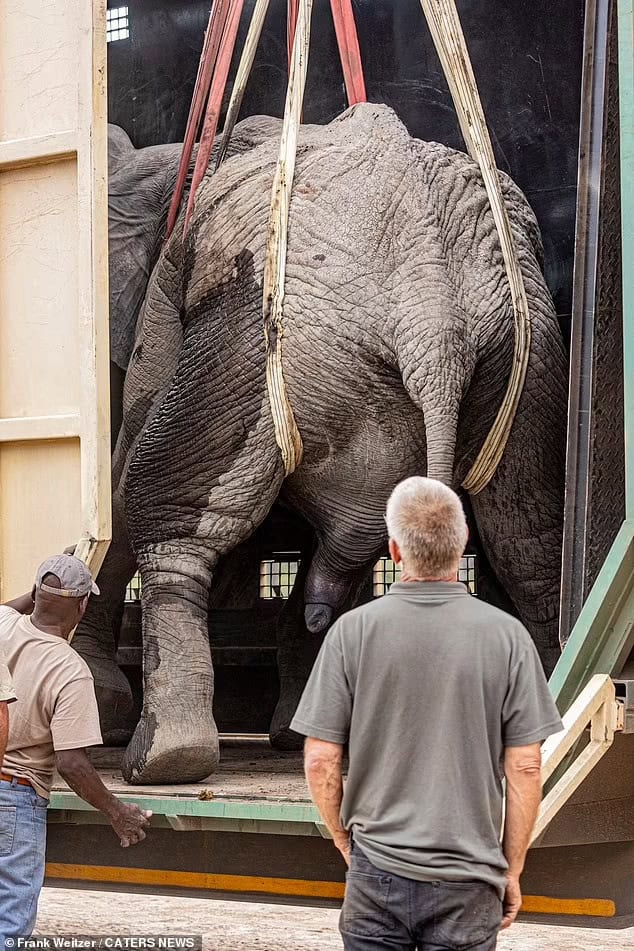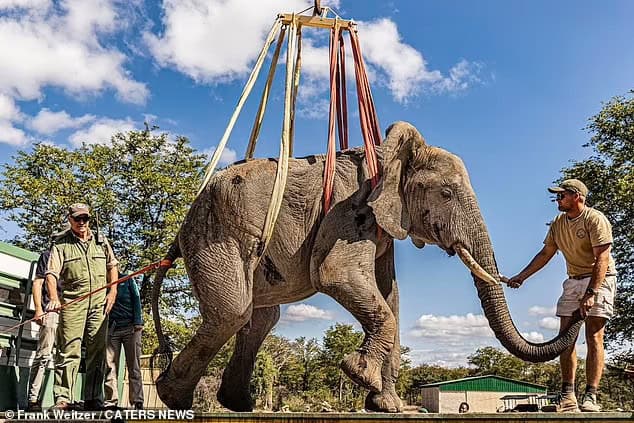Recent images have shown the process used by African conservationists to relocate several large elephants from Liwonde National Park to Kasungu National Park in Malawi.
The move, aimed at controlling the growing elephant population and reducing human-wildlife conflict, involved sedating the animals and lifting them onto transport trucks with cranes.

The process begins with the elephants being tranquilized and placed into large harnesses. Cranes then lift the sedated animals into trucks designed for their transport. This method is crucial for transferring the six-tonne elephants safely between parks.
Frank Weitzer, a photojournalist and field guide documenting the operation, highlighted the challenges.
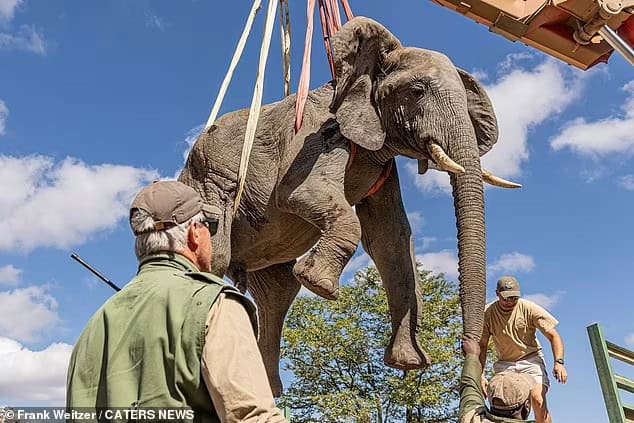
“Transporting male elephants is particularly difficult due to their size and weight, which exceed that of females,” he explained.
In the past, ropes were used to lift the elephants by their ankles, requiring them to be placed on their sides before receiving a wake-up drug.
To improve the process, the team from Conservation Solution has developed a new technique. Elephants are now lifted using a custom-made harness that keeps them upright.
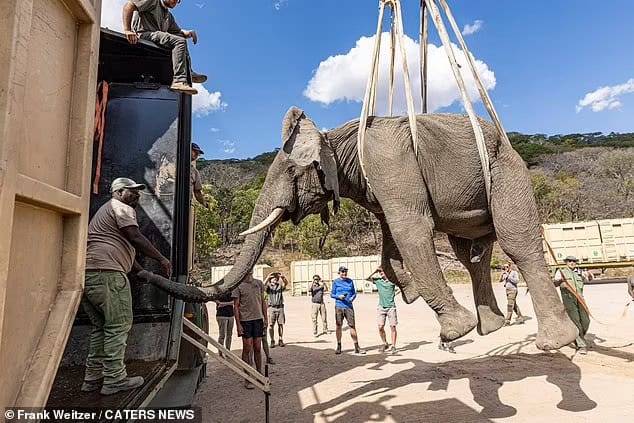
This allows them to receive the antidote while standing in the transport crate, making the process smoother and reducing the difficulty of getting the elephants to their feet once they wake up.
Weitzer described the scene as “spellbinding,” noting the surreal experience of watching such large animals lifted and moved. “Seeing a six-ton animal almost floating in the air while sedated was incredible,” he said. “It was a reminder of how amazing these creatures are.”
African elephants face significant threats, including habitat loss and poaching, which contribute to declining numbers.
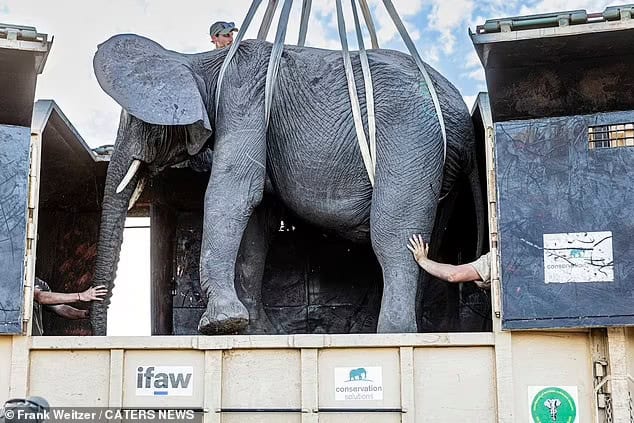
According to the International Union for Conservation of Nature, the fragmentation of elephant herds and ongoing threats further exacerbate the risk of extinction.
While these majestic animals are found primarily in central Africa, there are also populations in West African countries such as Mali, Senegal, and Guinea.
